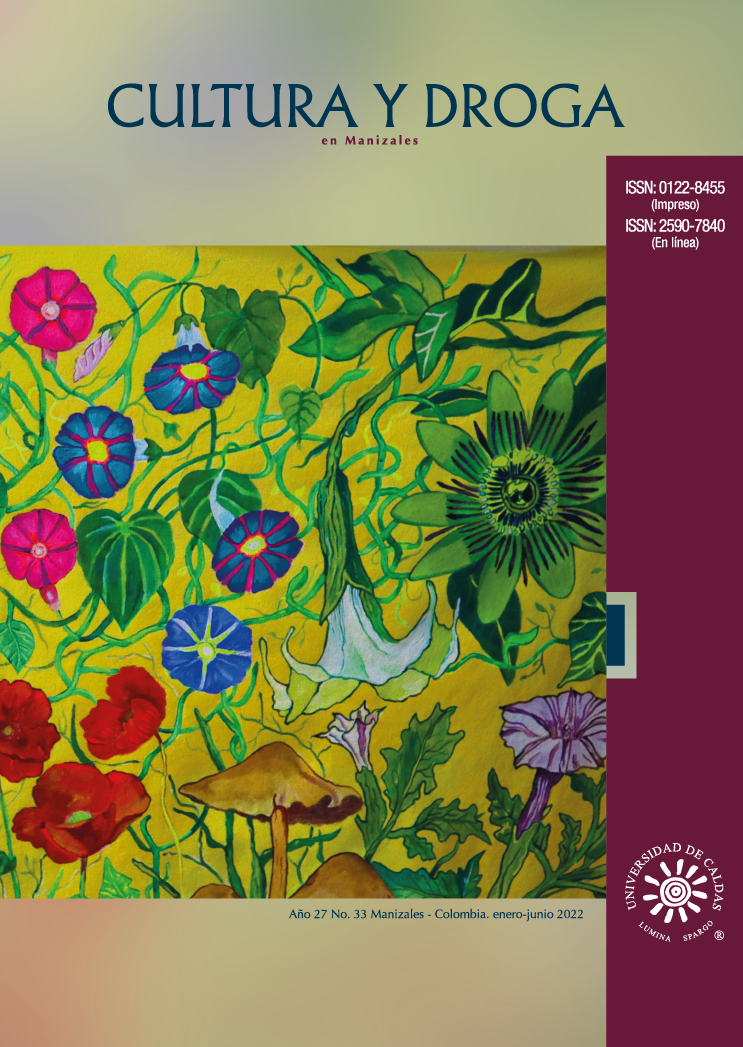Authors
Abstract
The therapeutic use of peyote occupies a prominent place in healing circles and ritual contexts in different parts of the Mexican national territory. The objective of this article is to evaluate from a psychiatric and anthropological perspective the therapeutic benefits among non-indigenous members (men and women) of the middle class who consume it within the ritual format of the Native American Church. For this, the researchers relied on open and structured interviews to reveal disorders and risks due to drugs use, particularly peyote. Among the most relevant results found are: the construction of narratives in which a clear healing process is assumed in the change of habits and the type of social relationships. From the clinical point of view, 85% of the sample presented evident improvements to their previous situation. The findings allow highlighting the role played by a highly disciplinary ritual, as well as the creation of affective and emotional ties between the group. New concerns push the broadening of the horizon of the study to corroborate these results.
Keywords
References
Guzmán, M. (2017). Interculturalidad en torno al uso del peyote. Un patrimonio biocultural en condición de ilegalidad. Alteridades, 27(53), 95-106.
Guzmán, M. y Labate, B. (2018). Notas sobre el uso de ayahuasca y peyote en México: un campo enteogénico emergente. En C. A. Steil, R. De la Torre y R. Toniol (Coords.). Entre trópicos. Diálogos de estudios Nueva Era entre México y Brasil (pp. 115-141). CIESAS-COLSAN.
Guzmán, M. y Labate, B. (2019). Reflexiones sobre la expansión y la legalidad del campo peyotero en México. Frontera Norte, 31(17).
Halpern, J., Sherwood, A., Hudson, J., Yurgelum-Todd, D. & Pope, H. (2005). Psychological and cognitive effects of long term peyote use among native americans. Biol Psychiatry, 58, 526-631.
Hermle, L., Füngfeld, M., Oepen, G., Botsch, H., Borchardt, D., Gouzoulis, E., Fehernbanch, R., & Spitzer, M. (1992). Mescaline-induced psychopatological,
neuropsicological and neurometabolic effects in normal subjects: Experimental psychosis as a tool for psychiatric research. Biol Psychiatry, 32(11), 976-991.
Labate, B. y Cavnar, C. (2016). Peyote: History, tradition, politics and conservation, ABC-CLIO-Praeger Pub.
Loizaga, A. y Loizaga, A. (2019). Peyote y salud mental. Memorias del Congreso Sección 2, 101-106. https://bit.ly/34gciiT
Olivas, O. (2018). Danzar la frontera. Procesos socioculturales en la tradición de la danza azteca en las Californias. Juan Pablos Editor- El Colegio de la Frontera
Norte.
Scuro, J. (2016). Neochamanismo en América Latina. Una cartografía desde el Uruguay (tesis de doctorado en antropología social). Universidad Federal de Rio Grande do Sul, Porto Alegre.
Stewart, O. C. (1987). Peyote religion: A history. University of Oklahoma Press: Norman.
Turner, V. (1988). El proceso ritual. Estructura y antiestructura. Taurus Alfaguara.
Van Gennep, A. (1981). Les rites de passage. Picard.
Winkelman, M. & Roberts, T. (Eds.). (2007). Psychedelic medicine: new evidences for allucinogenic substances as treatments. Praeger Pub.

 PDF (Español)
PDF (Español)
 FLIP
FLIP






















